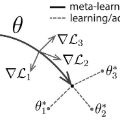Recently, it has been observed that a transfer learning solution might be all we need to solve many few-shot learning benchmarks -- thus raising important questions about when and how meta-learning algorithms should be deployed. In this paper, we seek to clarify these questions by 1. proposing a novel metric -- the diversity coefficient -- to measure the diversity of tasks in a few-shot learning benchmark and 2. by comparing Model-Agnostic Meta-Learning (MAML) and transfer learning under fair conditions (same architecture, same optimizer, and all models trained to convergence). Using the diversity coefficient, we show that the popular MiniImageNet and CIFAR-FS few-shot learning benchmarks have low diversity. This novel insight contextualizes claims that transfer learning solutions are better than meta-learned solutions in the regime of low diversity under a fair comparison. Specifically, we empirically find that a low diversity coefficient correlates with a high similarity between transfer learning and MAML learned solutions in terms of accuracy at meta-test time and classification layer similarity (using feature based distance metrics like SVCCA, PWCCA, CKA, and OPD). To further support our claim, we find this meta-test accuracy holds even as the model size changes. Therefore, we conclude that in the low diversity regime, MAML and transfer learning have equivalent meta-test performance when both are compared fairly. We also hope our work inspires more thoughtful constructions and quantitative evaluations of meta-learning benchmarks in the future.
翻译:最近,人们注意到,转让学习解决方案可能是我们解决许多少见学习基准所需要的所有方法,从而对何时和如何部署元学习算法提出重要问题。在本文件中,我们力求通过以下方式澄清这些问题:1. 提出新的衡量标准 -- -- 多样性系数 -- -- 以在几个少见学习基准和2中衡量任务的多样性;2. 通过比较模型 -- -- 综合学习(MAML)和在公平条件下(同样的结构、相同的优化者以及经过培训的相同模式)转让学习(使用基于多样性系数),我们表明,流行的MiniIMageNet和CIFAR-FS少得分的学习基准存在低多样性。 这一新的观点将转让学习解决方案比在公平比较下的低多样性制度中的元获取解决方案更好。 具体地说,我们从经验上发现,低多样性系数与转让学习和在元测试时间和分类层的准确性(使用SVCCA、PWCA、CKA和OPD等基于特征的远程指标)学习基准密切相关。 为了进一步支持我们关于转让学习解决方案的定性和深度评估,我们还在学习模式中发现,在比较模型时,低质量和深度评估。




